River ways from Tang-Song Dynasties found in Huangsipu site in Zhangjiagang, Jiangsu Province
Huangsipu site is situated in Yangshe Town, Zhangjiagang City, Jiangsu Province. From December 2008 to January 2013, four seasons excavation works were conducted by Nanjing Museum, covering an area of about 4600 square meters. From March to December in 2017, trenches and ditches in the south and north of Fang Bridge have been set up and unearthed respectively in order to get a further understanding of the digging, using and depositing situations of Huangsipu river way. The excavated area was around 1800 square meters. Since February 2018, excavated area has been enlarged. Another 1000 square meters’ area was uncovered. Until now, the digging, dredging and usage of Huangsipu River way have been relatively clearly revealed.

The location of Huangsipu site
Main achievements
River way from Tang Dynasty
River way from Tang Dynasty has already been clearly uncovered by archaeological works in 2009. It is situated in the northwest of the Fang Bridge. During 2018, deposits from Tang Dynasty river way in unitsⅠT6209 andⅠT6210 have been unearthed. Relatively many porcelain specimens from Tang Dynasty were found.
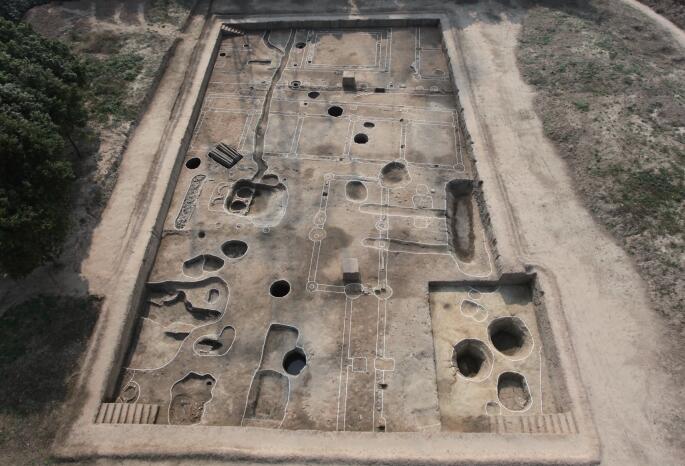
Large courtyard ruins from Tang Dynasty
River way from Song Dynasty
Since March in 2017 full-sectional excavations of Huangsipu River in the south and north of the Fang Bridge have been carried out respectively. About 1600 square meters’ area in the south of Fang Bridge was uncovered. There were three layers’ cultural deposits in the bottom of river way being revealed. Plenty of bricks, tiles, porcelain shards, iron nails, clam shells, animal and plant remains were discovered from the deposits. According to porcelain shards and copper coins, it’s predicted that the river way might be dug no later than Northern Song dynasty and last to Southern Song dynasty. No porcelain shards and copper coins from periods later than Southern Song dynasty were found at all. In unitsⅠT6402,ⅠT6502,ⅠT6602 and so on, there were three grooves and a line of equidistant wood posts along the south side of the grooves. These features might be related to trestle bridge in the river way.
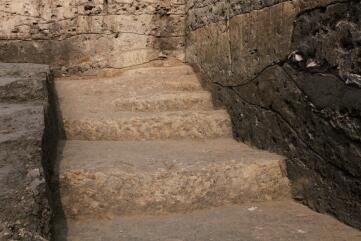
Steps of River way from Tang Dynasty
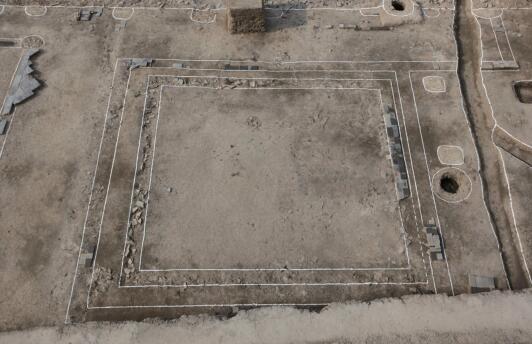
House Foudations F20 and F21 of Tang Dynasty
Almost 900 square meters’ area was excavated in the north of the Fang Bridge. Many recoverable porcelains and potteries, relatively many bricks with inscriptions and some complete stone elements were left in the bottom of the river. Two human skulls were also cleared in the surface of the river bottom. Besides, in the area of unit T22, relatively many wood posts were found, east-west oriented and intensively distributed in the river bottom. In this place, wood posts were rather intensively placed, longitudinally crossing river bottom, which probably were related to water gate or water lock. This part of river way probably has the same time with the river way in the southern side. From brick and tile deposits in the river bottom, porcelain wares and cups with high stand from Longquan Kiln in Yuan Dynasty were uncovered, which indicated that during Yuan Dynasty, river way in this area might be dredged again. According to the result of sectioning of Huangsipu River, it’s shown that Huangsipu River was one of the main river systems in the south of the lower reaches of the yangtze River region during Tang-Song periods.
Large courtyard ruins from Tang Dynasty
Until now, large-sized courtyard ruins have been revealed in the east area of the site, including large long-lined housing foundations (F18, consists of 7 rooms), square housing foundations (F20), rectangular housing foundations (F19), hearth (Z7, Z8, Z9,Z10) and water wells (J9, J14, J19), granaries and so on. Among them, square, long-lined and rectangular housing foundations and so on all have central axis layout. And central axis layout usually appeared in temple buildings. Stone statues of Buddha were discovered from Tang-Dynasty river ways before. Features and artifacts found from the river way and documentary texts suggest that there should be temple courtyard ruins during Tang-Song dynasties in this site and during Song Dynasty the temple should have pagodas. Therefore, based on layouts of courtyard from Tang Dynasty and unearthed artifacts and historical texts which were related to Buddhism, this large courtyard ruins should be temple building.
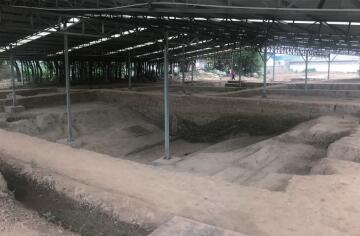
River way from Tang Dynasty
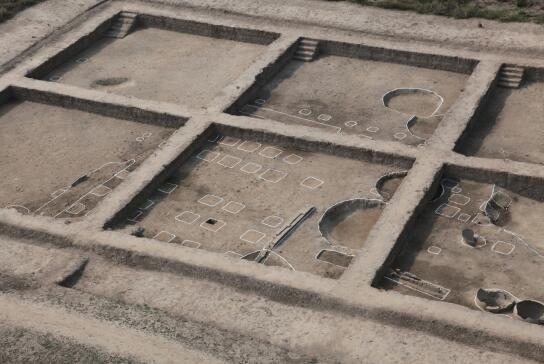
Barns of Tang Dynasty
Academic meanings
After more than ten years’ archaeological works of Huangsipu site, cultural appearances of the site become more and more clear. Plenty of bricks, tiles and porcelain shards from deposits and relatively regularly distributed wood posts discovered in river ways from Tang-Song dynasties all reflected that Huangsipu used to be a port, very prosperous and playing an important role in the history of Southern Yangtze Region. Thus, this find is the most significant discovery of port sites in lower reaches of Yangtze River up to now. Large-sized courtyards from Tang Dynasty discovered in the east part of the site have central axis layouts which are like those of temple buildings. Stone Buddha statues from Tang and Song dynasties river ways, plenty of Song Dynasty style bricks with inscriptions uncovered in bridge piers from Ming Dynasty and river way in Song Dynasty all suggest that there were temples in this site during Tang-Song Dynasties. Considering historical texts and many features and artifacts unearthed in Huangsipu site from Tang Dynasty, important clues are provided to prove the fact that JianZhen went to Japan by ship from Huangsipu port. (Translator: Ma Huanhuan)

